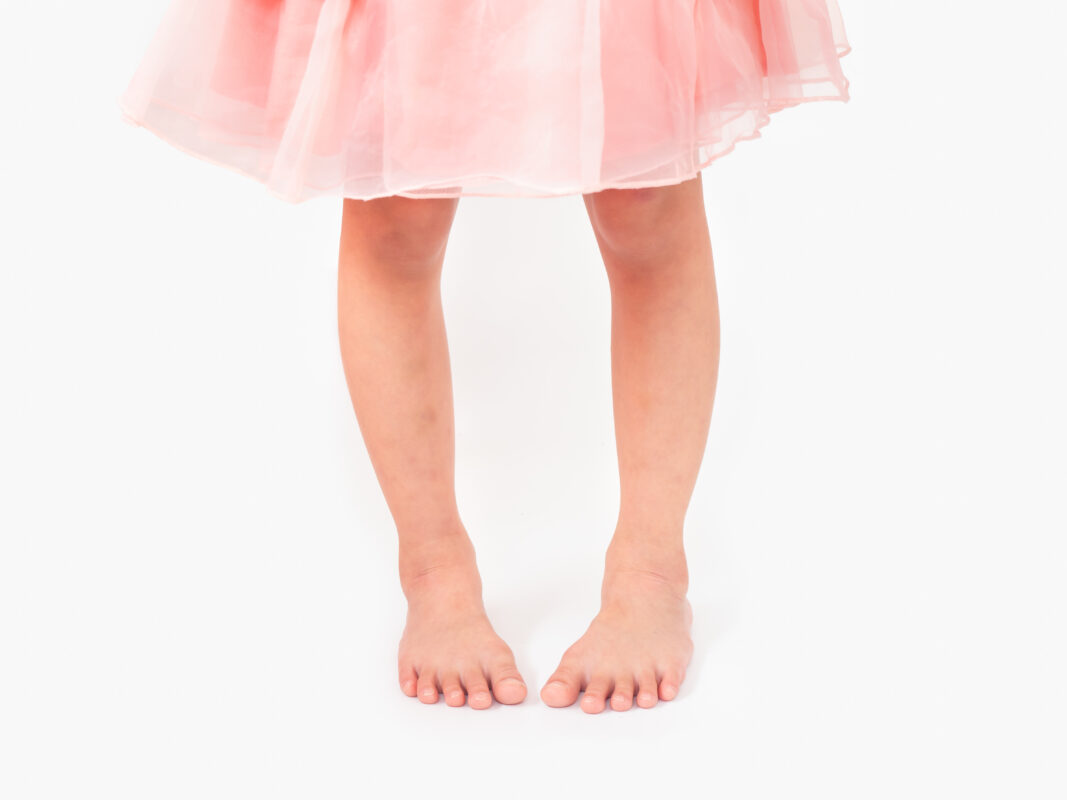

Bow Legs
What are Bow Legs?
- Bow Legs (genu varum) refers to a condition where the knees do not meet when standing with ankles touched. The name of the condition comes from the outward curvature of the legs as it looks like a “Bow”.
- In fact, it is very common to see Bow Legs in children under the age of 3 as they are still undergoing growth. They usually outgrow it as they get older.
- However, if the condition persists after the age of 3 or causes any discomfort, early medical assessment is recommended to seek professional advice.
What causes Bow Legs?
- There are many factors that could contribute to Bow Legs, both inherent and acquired.
- As Bow Legs is more common in some ethnicities than in others, it is believed that genetic factors could play a role.
- Nutritional intake can also contribute to Bow Legs.
- For instance, children with “Rickets” have poor intake or absorption of calcium, phosphorous and vitamin D, which negatively affects their bone health and development.
- Other non-inherent factors such as trauma and infection, could also contribute to Bow Legs.
What are the long-term consequences if Bow Legs are not corrected?
- Many might think that Bow Legs is only a condition that affects the appearance. However, it can lead to serious long-term consequences if not treated properly in a timely matter.
- With the outward curvature, excessive load and pressure are placed on the knee joints, causing damage to the joint cartilage. As a result, the knee joints will deteriorate in an accelerated rate and may cause pain in a long run.
- With deteriorated knee joints, the legs become more bowed, in return placing more pressure to the already-damaged knee joints. If the condition is left untreated, this vicious cycle will go on and eventually causing more pain and irreversible damage to the knee joints.
- It is therefore crucial to seek medical consultation in early stage to prevent irreversible damage and pain of the knee joints.
Treatment Options for Bow Legs:
- In most cases for children under the age of 5 – 6, no aggressive treatment is needed and regular monitoring is key.
- However, if bowing of the legs persists after the age of 8, parents should seek medical advice to discuss if more active treatments are needed.
- It is important to note that not only children or teenagers are affected by Bow Legs. It can also affect adults, especially if one suffers from persistent knee pain, detailed medical examination should be performed to see if it could be caused by Bow Legs.
(1) Guided Growth (Minimally Invasive Surgery)
- Suitable for children and teenagers who are still undergoing growth, between the age of 8 – 12 is prime time to treat and correct Bow Legs.
- Correction usually takes 6 – 18 months.
- One of the key benefits of Guided Growth is that it is minimally invasive, meaning it costs less trauma and pain to the patient. Moreover, it is a reversible treatment. When the degree of correction is satisfactory and development of the legs is mature enough, the guided growth implant can be removed from the body, allowing the legs to grow naturally moving forward.
- During the surgery, doctor will place a guided growth implant through a very small incision to temporarily stop growth on one side of the Tibia or Femur. Growth on the other side of the Tibia is not affected. As such, the legs will gradually grow straight and the implant can be removed when alignment of the legs is improved.
(2) High Tibial Osteotomy (HTO)
- Suitable for adults who have completed their skeletal development. The procedure is suitable for people from the age of 17 onwards, till before entering elderly.
- The main objective of HTO is to preserve the knee joints, as much as possible, to delay irreversible damage to the joints and to improve the pain caused by it. Through rehabilitation after surgery, the patient can expect to live a normal life and even perform high-intensity activities, such as running, hiking, swimming.
- For some people, this procedure can delay or prevent the need to undergo partial or total knee replacement.
- During the surgery, doctor cuts through the Tibia and realign the legs. Plates and screws are used to position the bones in corrected alignment. At the same time, bone substitute materials are injected to encourage healing. These materials will be absorbed by the body and will not affect the joints.
- For people who suffer from persistent knee pain, HTO can serve as an alternative treatment option to knee replacement. However, it is important to note that the procedure has to be performed before the knee joints are severely damaged.
(3) Knee Replacement
- When the knee joint is severely damaged, and the pain is intolerable, affecting daily activities of the patient, knee replacement may need to be considered.
- Knee replacement is not a permanent solution because there will be wear and tear of the artificial joint over time. Some people may require to have another replacement performed after 15 – 20 years.
References:
- Pediatric Orthopaedic Society of North America. Orthokids. Bowed Legs & Knock Knees. https://orthokids.org/conditions/bowed-legs-knock-knees/
- American Academy of Orthopaedic Surgeons. OrthoInfo. Bowed Legs (Blount’s Disease). https://orthoinfo.aaos.org/en/diseases–conditions/bowed-legs-blounts-disease/
- Hospital for Special Surgery. Bowlegs. https://www.hss.edu/condition-list_bowlegs.asp ; Knee Surgery: High tibial osteotomy. https://www.hss.edu/conditions_knee-surgery-high-tibial-osteotomy.asp



 繁體中文
繁體中文